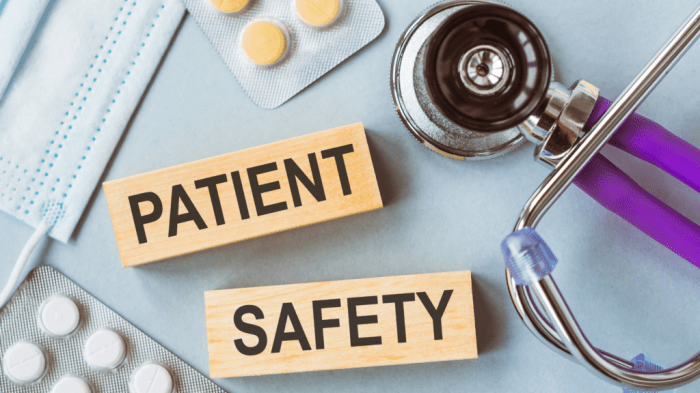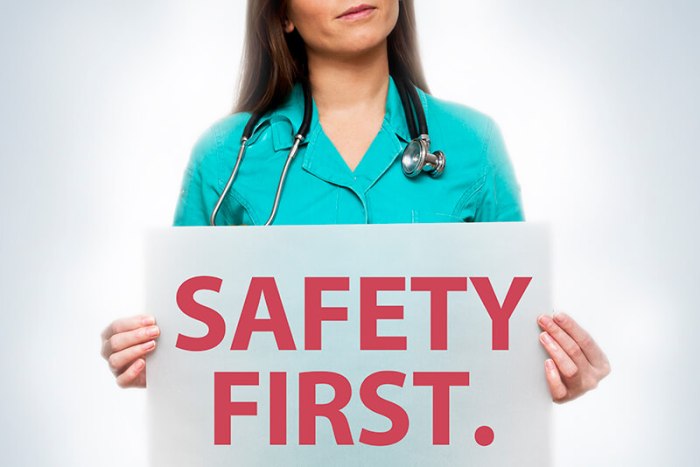
Patient Safety in Home Care sets the stage for this enthralling narrative, offering readers a glimpse into a story that is rich in detail with a focus on ensuring the well-being of individuals in their own familiar surroundings. From strategies to communication, this topic delves into the critical aspects of maintaining safety at home.
Patient Safety in Home Care
Ensuring patient safety in home care is crucial to providing quality healthcare services outside of traditional medical facilities. It involves identifying and mitigating potential risks that could harm patients in their own homes.
Importance of Patient Safety in Home Care
Home care settings present unique challenges compared to hospitals or clinics, making patient safety a top priority. Without proper safeguards, patients may be exposed to various risks that could compromise their well-being.
Common Risks to Patient Safety in a Home Care Setting
- Medication errors due to mismanagement or improper administration.
- Falls and accidents in an environment that may not be fully adapted for a patient’s mobility needs.
- Infections from inadequate hygiene practices or lack of sterile conditions.
- Failure to monitor vital signs and symptoms that could indicate a decline in health.
Role of Caregivers in Ensuring Patient Safety at Home
Caregivers play a crucial role in safeguarding patient safety at home by providing attentive and competent care. They must be trained to recognize potential risks, follow proper protocols, and communicate effectively with healthcare professionals to address any concerns promptly.
Strategies for Ensuring Patient Safety

Ensuring patient safety in home care requires implementing best practices and strategies to prevent medication errors, falls, and other potential risks. Proper management of medications, fall prevention measures, and regular home safety assessments are essential components to safeguard the well-being of patients.
Best Practices for Medication Management
- Always double-check the medication label and dosage before administering it to the patient.
- Keep an updated list of all medications, including prescription drugs, over-the-counter medications, and supplements.
- Use pill organizers or medication reminder apps to help patients stay organized with their medication schedule.
- Educate patients and caregivers on the importance of taking medications as prescribed and potential side effects to watch for.
- Regularly review medications with healthcare providers to ensure they are still necessary and appropriate for the patient’s condition.
Fall Prevention Measures in Home Care
- Remove tripping hazards such as loose rugs, clutter, or slippery floors in the patient’s home.
- Install grab bars in bathrooms and near beds to provide support and stability for patients at risk of falls.
- Ensure adequate lighting in hallways, staircases, and common areas to improve visibility and reduce the risk of falls.
- Encourage patients to wear non-slip footwear and use assistive devices like canes or walkers if needed.
- Implement regular exercise programs to improve strength, balance, and coordination to prevent falls.
Importance of Regular Home Safety Assessments
- Conduct comprehensive home safety assessments to identify potential hazards and make necessary modifications to ensure a safe environment for the patient.
- Involve healthcare professionals, occupational therapists, or home care providers in home safety assessments to address specific needs and risks.
- Regularly reassess the patient’s home environment as their condition or mobility changes to adapt safety measures accordingly.
- Educate patients and caregivers on emergency procedures and safety protocols in case of accidents or incidents at home.
- Collaborate with healthcare teams to develop personalized care plans that include specific safety measures tailored to the patient’s needs and living situation.
Communication and Collaboration

Effective communication and collaboration play a crucial role in ensuring patient safety in home care. By fostering clear and open communication between healthcare providers, patients, and caregivers, the risk of errors and misunderstandings can be significantly reduced.
Tools and Technologies for Improving Communication
- Electronic Health Records (EHR): EHR systems allow for easy access to patient information, enabling seamless communication between different healthcare providers involved in the patient’s care.
- Telemedicine Platforms: Telemedicine tools facilitate virtual consultations and enable real-time communication between patients and healthcare professionals, ensuring timely interventions and follow-ups.
- Mobile Apps: Mobile applications designed for home care services can provide patients and caregivers with important reminders, medication schedules, and communication channels with healthcare providers.
Significance of Collaboration in Patient Safety
Collaboration among healthcare team members, including physicians, nurses, therapists, and other professionals, is essential for ensuring comprehensive and coordinated care for patients receiving home care. By working together and sharing information effectively, healthcare providers can address potential risks, prevent medical errors, and optimize patient outcomes.
Training and Education
Training caregivers and patients on safety protocols in home care is crucial to ensuring the well-being of the patients and the effectiveness of the care provided. By educating caregivers about proper procedures, medication management, infection control, and emergency response, the risk of errors and accidents can be significantly reduced.
Ongoing education plays a key role in enhancing patient safety awareness in home care settings. Regular updates on best practices, new technologies, and communication strategies help caregivers stay informed and adapt to the evolving needs of their patients. Continuous learning also fosters a culture of safety and accountability among care providers.
Resources for Continuous Learning
- Online courses and webinars specifically tailored to home care providers offer convenient and accessible training opportunities.
- Professional organizations, such as the Home Care Association, provide resources, guidelines, and workshops on patient safety and quality improvement.
- Mentorship programs and peer-to-peer learning initiatives allow caregivers to share experiences, learn from each other, and stay updated on industry trends.
- Certification programs, such as the Certified Home Health Aide (CHHA), offer structured training and education to ensure caregivers meet industry standards and regulations.
In conclusion, Patient Safety in Home Care is a multifaceted concept that requires attention to detail and proactive measures to ensure the best possible outcomes for patients. By focusing on communication, collaboration, training, and education, caregivers can create a safe and nurturing environment for those under their care.
FAQ Guide
What are some common risks to patient safety in a home care setting?
Common risks include medication errors, falls, and lack of proper supervision.
How can caregivers ensure patient safety at home?
Caregivers can ensure safety by following medication protocols, conducting regular safety assessments, and maintaining open communication with healthcare providers.
Why is ongoing education important for enhancing patient safety awareness?
Ongoing education helps caregivers stay updated on best practices, new technologies, and safety protocols, ultimately improving patient outcomes.





